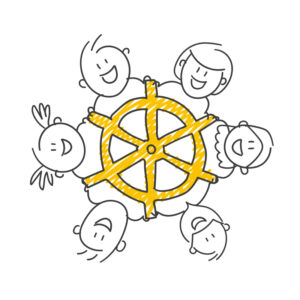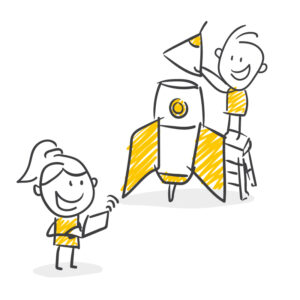Productivity
PeerFives And Its Effect On Appraisals In An Organization

The Need For Peer Recognition
Peer recognition is one of the best things to incorporate into the daily workings of any organization. As we know, the benefits of this are aplenty, the first impact being seen on the soul, the body, and the mind of every employee. There is undoubtedly a sense of pride that is built in the mind of each employee to go ahead and work for the organization while being cheered on by colleagues for any good work that is done by them.

The regular occurrences of compliments and praises serve to be a morale booster that often motivates employees better than a good old pat on the shoulder from higher-ups; at times, it is even more effective than the goodies handed out by the organization. As humans, we look for recognition and the feel-good factor associated with it upon receiving compliments. Thus, having a peer recognition system in place is always beneficial.
Why PeerFives For Peer Recognition?
When it comes to peer recognition, there is more than what meets the eye. If there is a proper peer recognition system in place, it often helps to go through the data that is received from the system. As an organization, if there is any consideration for such a system, PeerFives is highly recommended.

PeerFives is an all-in-one peer recognition tool that can be used on team collaboration software such as Slack and Microsoft Teams (coming soon!). With employees complimenting and recognizing their peers’ good work right when it happens, the data collected from it is well represented via the Dashboard to the managers and the admins.
Appraisals and PeerFives
While it may just seem like stats at first, a clever management team shall read in-between the lines and study the data to draw conclusions. The entire process may seem like a rather unfruitful activity of crunching numbers; however, during the appraisal season, all of this data shall be no lesser than a goldmine. Certainly enough, all the recognition for good work might have been done at that very instance, and praises from months ago might be forgotten by the employees themselves, but the data still gives an accurate representation.

Throughout the year, the peers have had the priceless chance to observe their colleagues and give feedback on a regular basis. This itself gives admins and managerial teams a window to peek into any employee’s skills. The kind of work done by the employee, their traits such as their punctuality, the quality of their work, the collaborative and individual abilities, all are instantly available at a glance. The data also shines a light upon how well each employee fares when it comes to interpersonal interactions and the sincerity that they display towards their work on a day-to-day basis.
The above-mentioned data is immensely valuable and helps HR teams decide how correct their pick for the role has been. The whole appraisal process no longer remains to be a one-dimensional annual ritual, but rather it turns into a comprehensive and detailed insight painting a realistic picture of the efforts put in by the employee.
Constructive Feedback
An appraisal is an in-depth assessment of the employee and the organization’s individual and combined goals. Often appraisals are a great way of gaining a peek into the mind of the employee and helping them align with the goals of the organization. No longer does the conversation remain to be one about missed and achieved targets, but it also brings to light the amount of effort that each employee has put in over a long stretch of time to achieve a target. Any shortcomings can not only be highlighted but they can also be backed with solid data to give constructive feedback and strategize the course of correction for the immediate and long-term future.

This helps both the employee and the management remain on the same page as far as the goals of the organization are concerned while simultaneously ensuring that there is significant progress in even those employees who might tend to be under-performing and working far below their optimal potential.
Fair Appraisals
The fairness of an appraisal matters greatly as employees often have great faith in the management to get their fair share of the pie after a long period of work. However, to ensure fairness, a proper peer recognition system backed by data must be in place. Managers who often don’t interact with their employees on a daily basis may find it hard to judge an employee’s work at one go at the end of the year. Therefore, continuous feedback shall provide data-backed ratings with greater accuracy.

In some organizations, there is a conflict between managers and certain employees, and this may lead to disproportionate appraisals. In turn, such appraisals shall lead to organizations losing talent to rivals. In such cases, peer recognition data that is available to the entire organization can be closely examined, and if the employee in question is rated highly by most peers and is rated poorly by the manager can be examined more closely, and if required, even an investigation can be launched.
Retention and Proper Use of Talent
Above all, appraisals are conducted to ensure that the employees are guided, the work done is reviewed, and the scope for the future is discussed. There shall be situations where there are certain employees who outperform all expectations. In such cases, there is the need to ensure that talent within the organization is recognized and promoted to suitable posts along with proportionate remunerations. This is extremely integral as it can be vital in strengthening the organization. Right from building a team to making difficult calls about the rotation of jobs and ultimately in having vital data-backed plans for succession whenever the need arises.

In conclusion, appraisals using data and analytics retrieved from PeerFives is nothing but a corporate match made in heaven. The potential seamless appraisals by the seamless integration of the two are simply too good to be true and a dream come true for most HR teams and high-level management in mega-organizations.

